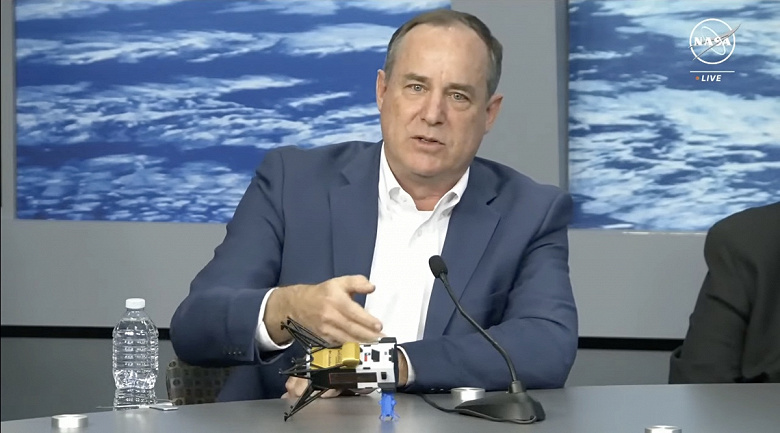Despite the accident, the lander continues to function successfully
Intuitive Machines' Nova-C lunar lander may have capsized during its descent to the lunar surface on February 22.
Company representatives, speaking at a press conference on February 23, said that according to their information, the lander is on its side at some distance from the intended landing point near the Malapert A crater in the south polar region of the Moon. Intuitive Machines CEO Steve Altemus noted that this could be caused by the module's overspeed descent, which was descending about three times faster than expected.
A few hours after landing, Intuitive Machines announced that the lander was in an upright position. However, as Altemus noted, this information was based on outdated telemetry data.
Engineers have not yet received images from the module, as they are busy setting up radio receivers. Intuitive Machines CTO Tim Crane added that they are also working to determine what data rates they can get if the lander is on its side and some antennas are therefore unusable.
On the side of the lander facing the surface, there is only one payload — a work of art created by artist Jeff Koons. Other commercial and scientific payloads, including those provided by NASA, continue to operate and continue to collect data, as they did during the flight to the Moon and during the descent to the surface. One of the science instruments provided by NASA may have saved the mission. Engineers were able to use data from a navigational Doppler lidar developed at NASA Langley Research Center to replace faulty laser rangefinders on the lander.
Problems with laser rangefinders were discovered after the module reached lunar orbit on February 21. Engineers decided to use these instruments to more accurately measure the orbit, which turned out to be more elliptical than expected. The lasers, however, did not fire and engineers determined that a physical switch had not been turned on before launch.
«It was like a blow. We were preparing to lose the mission, — recalled Altemus. Then Crane discovered that it was possible to obtain data from the two lasers of the NASA instrument. This process also provided a more thorough check of NASA payloads than originally expected.
The goal of the Nova-C payload was to achieve technology readiness of TRL 6 on a scale of 1 to 9, which involves testing a prototype technology in an appropriate environment. The TRL (Technology Readiness Level) is a technique used to assess the degree of readiness of a technology for industrial use. Due to the successful use of this technology in landing, engineers have established a TRL level of 9, which means that the technology has passed all the necessary tests and has been successfully applied in an industrial environment.
Altemus added that the fact that the Nova-C lander ended up in an elliptical orbit was an “accident” that prompted engineers to activate the laser range finder earlier than planned and detect the problem. «It was luck and a little happy coincidence for us».
One of the payloads that is not yet operational is the student-developed EagleCam, designed to be ejected from the lander about 30 meters from the lunar surface to film the landing process. But the ejection did not occur after the lander's software was changed to allow the use of navigation Doppler lidar data. The EagleCam is mounted on the side of the module and will be ejected later in the mission, which could remain on the lunar surface for 9 to 10 days, providing images of the lander.
Crane noted that based on the operation of the optical navigation sensors on the lander, it is likely that the module is within two to three kilometers of the planned landing site. NASA's Lunar Reconnaissance Orbiter is scheduled to fly over the area in the coming days and take images to determine the exact landing site.

